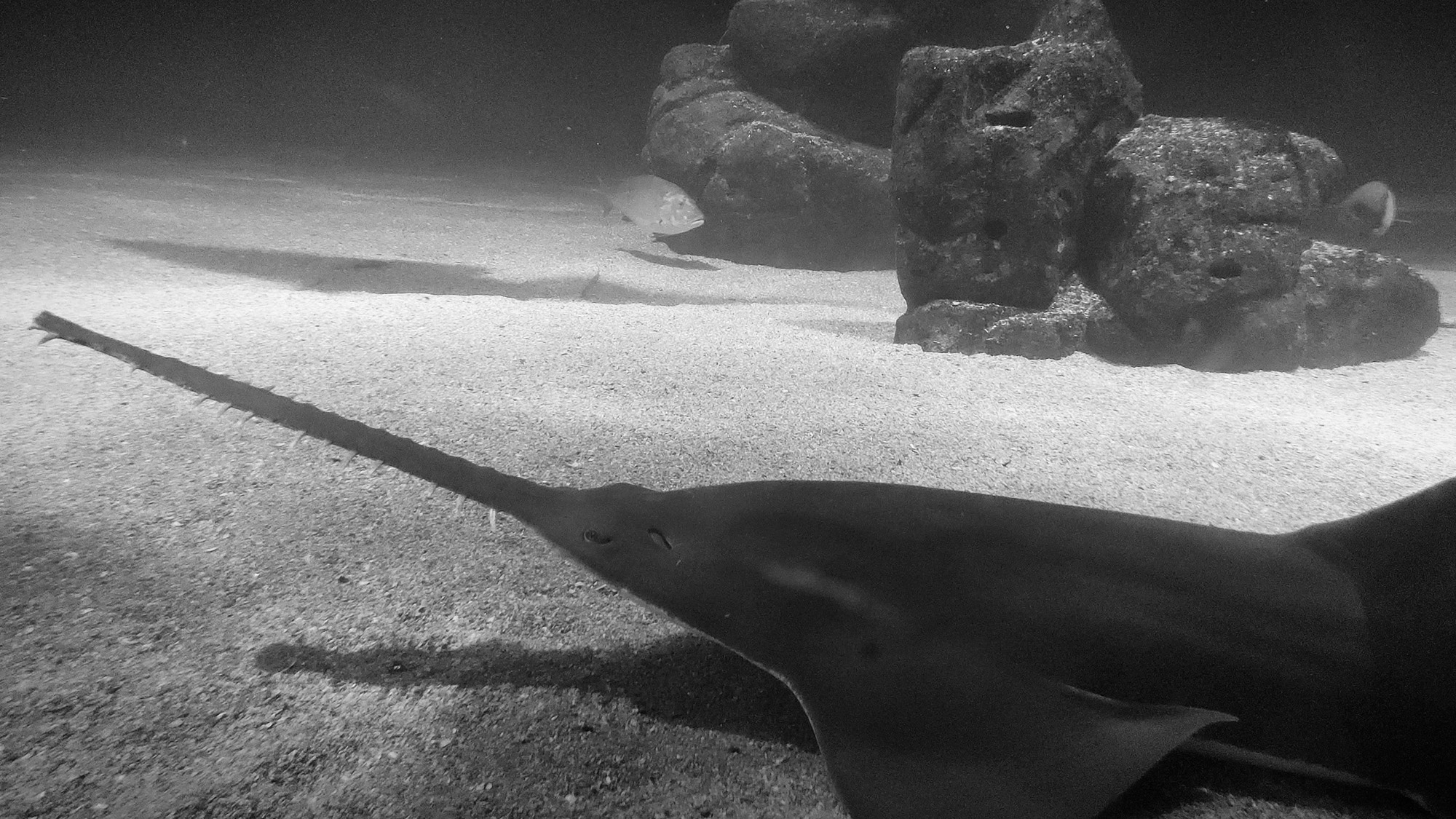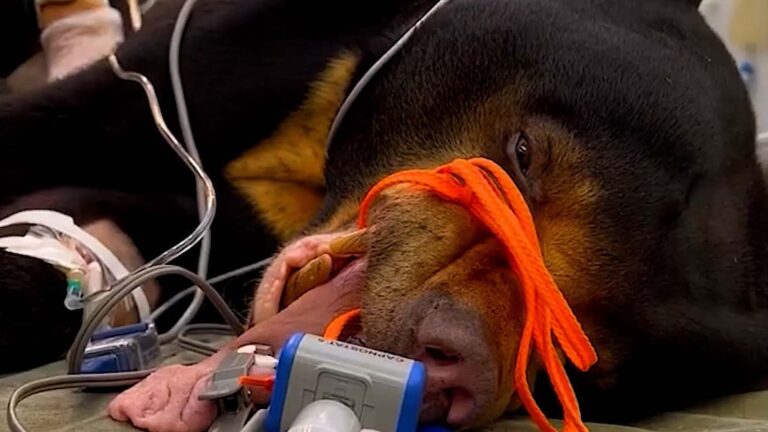This largetooth sawfish has travelled a pioneering 2,800 km in 60 hours in a lorry thanks to cutting edge technology to find a new home in a Spanish sea world.
The largetooth sawfish (Pristis Pristis), called Carla, travelled from Universeum of Goteborg in Sweden where she lived for 20 years, to the Oceanografic of Valencia, located in eastern Spain.
Pristis Pristis is considered a critically endangered species by the Red List of the International Union for Conservation of Nature (IUCN) and are very difficult to find and monitor in the natural habitat in tropical coastal waters.
Adults can be between 2.5 metres (8.2 feet) to 7.5 metres (25 feet) in length and weigh up to 600kg (1,323 lb), presenting a unique challenge to the transport team.
The plan involved more than 30 experts including vets, aquarists, biologists and transport teams in a highly coordinated effort with the help of specialist transport companies Cairns Marine and DeJon Marinelife.
Every part of the trip was meticulously planned in advance from the beginning of the trip in Sweden, as the teams raced against the clock to minimize the animal’s stress and keep it safe according to the Oceanografic in a press statement obtained by Real Press.
After 60 hours on the road, Carla arrived at the doors of Oceanografic in Valencia at around 11 pm on 19th June 2019 and everybody was waiting for it, but the trip was only revealed to the public by the Oceanografic on the International Day of largetooth sawfish, Saturday 17th October of 2020, after a tense four months in which she acclimatised to her new home.
Carlos Taura, biologist assistant of the Oceanografic told Real Press: “Plans for the transfer started a year ago, as the Swedish aquarium was becoming too small for the fish. Oceanografic offered to give it the space it needed”,
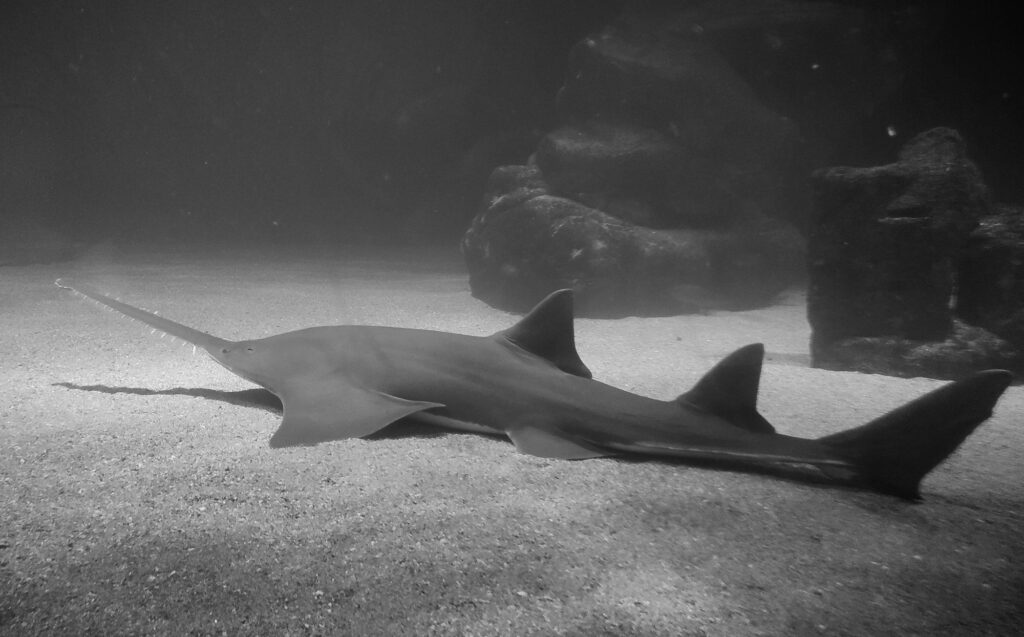
“There were three critical challenges during the transport operation. First of all, catching the animal in the Swedish aquarium, but luckily it was well behaved and everything was fine”, Taura said.
The second challenge was the transport via lorry, which was difficult as it is very rare to do this sort of journey and it was such a long trip.
The third step was the transfer of the animal to the oceans tank in Oceanografic, as it was needed to move the animal from the lorry’s technical gallery, as it is called by keepers, to the main tank, which are around 100 metres (328 feet) from each other.
“We needed to choreograph everyone around the tanks and use a fork-lift truck to move the animal from the lorry to the tank”, Taura explained.
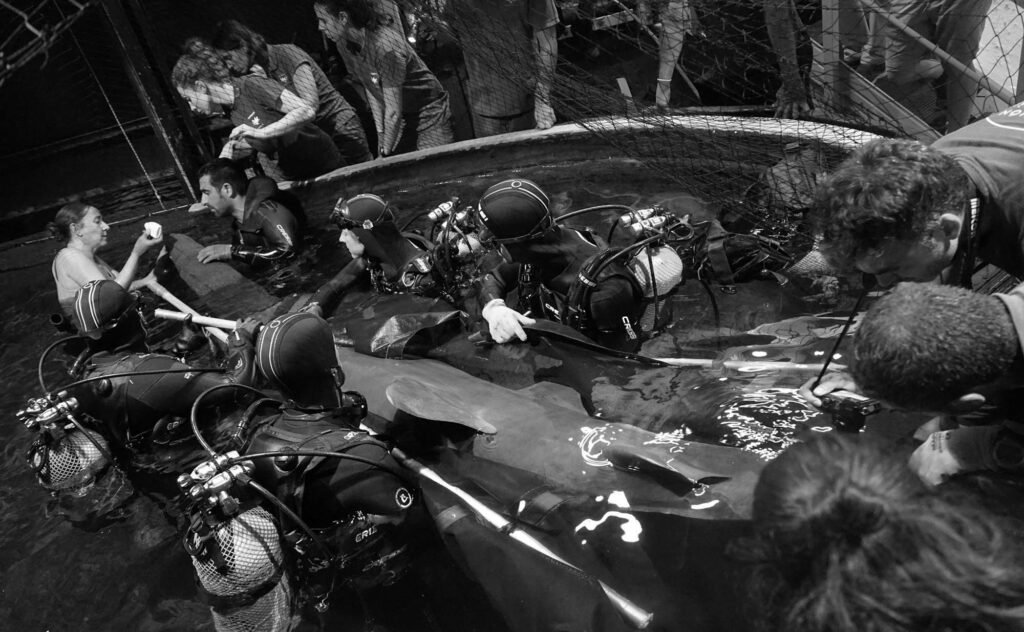
The members of the team had to plan and rehearse every single step to move the fish safely from the transport to the tank, from opening the transport tank and assessing the animal’s health, to the water parameters.
Firstly, Carla was measured on arrival in Valencia and some samples were taken to check on her health. She was found to be calm and healthy.
Then, the doors of the seven million litre Ocean tank at Oceanografic were opened and divers guided Carla in and monitored her until she found the bottom.
The cover on her nose was removed and Carla started moving and swimming around after 20 minutes to the delight of the team.
Taura said: “The (undisclosed) investment that we made in the transport operation was worth it as the people who helped us are a wonderful asset and not a lot of aquariums can do this”.
Carla adapted well to the tank at first, but keepers were still anxious about whether she would eat.
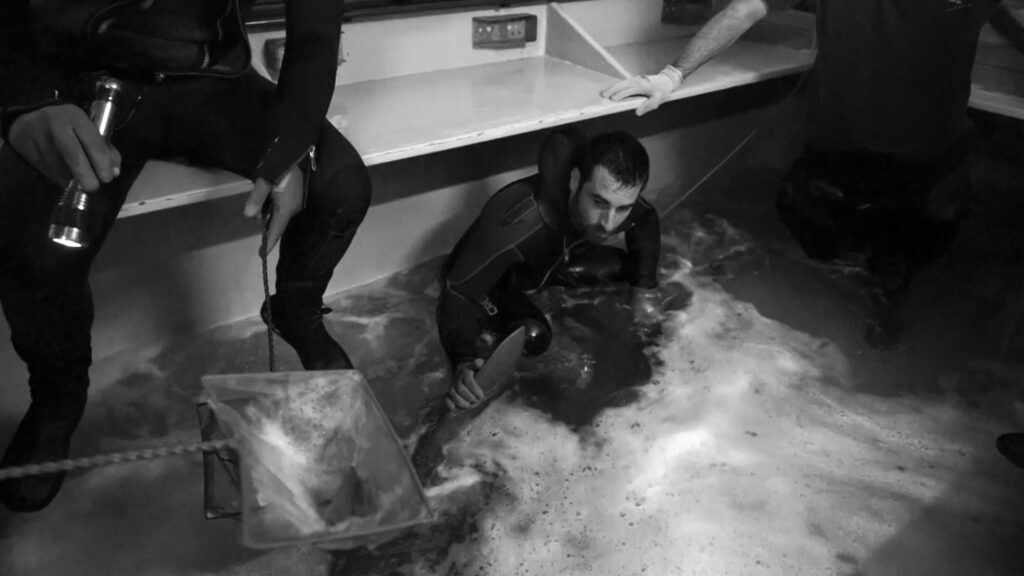
Keepers used different kinds of fish – frozen and fresh – to tempt her and make sure she was ok. Carla finally chose a Mediterranean fish, mullet, that had been caught by the keepers.
Carla has since been eating a varied diet that includes large pieces of hake, mackerel, cod, jack, European flying squid, salmon, tuna, and mullet.
She has become well adapted over the past few months and has even found a friend, Mr. Jasson, a male longcomb swordfish (Pristis zijsron) but sadly the two won’t mate as they are different species.
Carla is nocturnal and prefers to stay in the bottom of the tank, but is constantly alert to threats and using her hypersensitive nose to detect the movement and even the heartbeat of the buried prey.
“She is a very active animal, more so than Mr Jasson and is a very aggressive hunter.
“She swims a lot and is often seen moving around different parts of the tank, but she is well adapted.
“Other fish tend not to approach to her as she is pretty big and has a big mouth filled with teeth that keeps them away from her”, Taura explained.
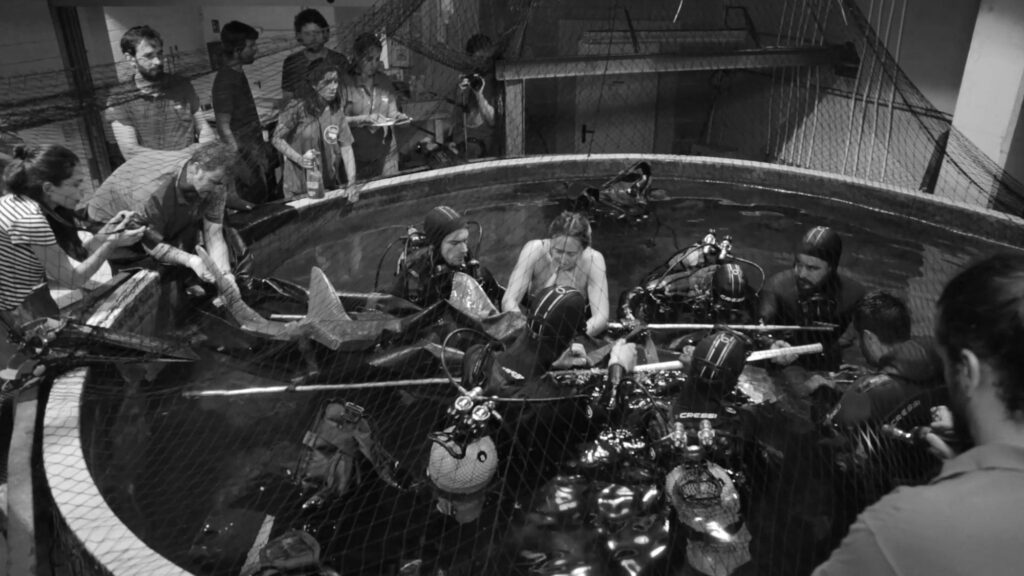
The team at Oceanografic are hoping that the middle aged swordfish will find a male to breed with but Taura warns “it will not be so easy as the possibility of having an aquarium willing to take its animals out is not very common”.
Longtooth sawfish have suffered from overfishing in the wild as they are sought after for shark finning and the novelty of their saw, which also gets easily entangled in nets.
Australia is the only country with a healthy population of the once global species. It is protected in more than 10 countries with conservation efforts taking place in Australia and the US.
To find out more about the author, editor or agency that supplied this story – please click below.
Story By: Ana Lacasa, Sub-Editor: Joana O Mihajlovska, Agency: Real Press
The Ananova page is created by and dedicated to professional, independent freelance journalists. It is a place for us to showcase our work. When our news is sold to our media partners, we will include the link here.

